
Bolzano is the capital city of the province of South Tyrol in northern Italy. With a population of 108,245, Bolzano is also by far the largest city in South Tyrol and the third largest in historical Tyrol. The greater metro area has about 250,000 inhabitants and is one of the urban centers within the Alps.

Nazi concentration camps in Norway were concentration camps or prisons in Norway established or taken over by the Quisling regime and Nazi German authorities during the German occupation of Norway that began on 9 April 1940 and used for internment of persons by the Nazi authorities. 709 prison camps or concentration camps, [including some death camps,] were counted by a project that had Randi Bratteli, as an advisor. Another source has claimed that there were around 620 prison camps.

The Operational Zone of the Alpine Foothills was a Nazi German occupation zone in the sub-Alpine area in Italy during World War II.
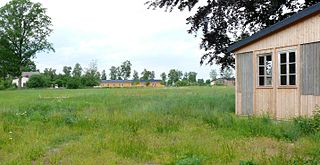
Stalag X-B was a World War II German prisoner-of-war camp located near Sandbostel in Lower Saxony in north-western Germany. Between 1939 and 1945 several hundred thousand POW's of 55 nations passed through the camp. Due to the bad conditions in which they were housed, thousands died there of hunger, disease, or were killed by the guards. Estimates of the number of dead range from 8,000 to 50,000.
Michael Seifert was an SS guard in Italy during World War II.
Karl-Heinz Bürger was a German SS functionary who held positions as SS and Police Leader during the Nazi era.
The Fossoli camp was a concentration camp in Italy, established during World War II and located in the village Fossoli, Carpi, Emilia-Romagna. It began as a prisoner of war camp in 1942, later being a Jewish concentration camp, then a police and transit camp, a labour collection centre for Germany and, finally, a refugee camp, before closing in 1970.
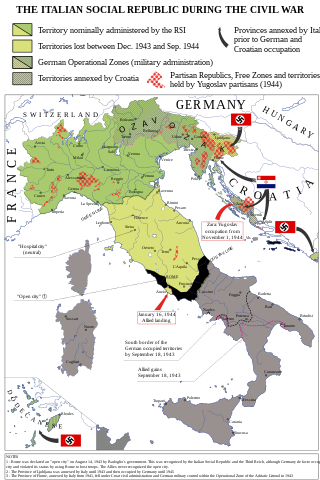
The Holocaust in Italy was the persecution, deportation, and murder of Jews between 1943 and 1945 in the Italian Social Republic, the part of the Kingdom of Italy occupied by Nazi Germany after the Italian surrender on 8 September 1943, during World War II.

Heinrich or Heinz Andergassen was an engineer, SS officer, and convicted war criminal who was executed for the torture and murder of seven Allied prisoners of war. He was a SS-Sturmscharführer and later an SS-Untersturmführer in Northern Italy.
The following is a timeline of the history of the city of Bolzano/Bozen in the Trentino-South Tyrol region of Italy.
The 12th SS Police Regiment was initially named the 12th Police Regiment when it was formed in 1942 from existing Order Police units (Ordnungspolizei) in Germany. It was redesignated as an SS unit in early 1943. The regimental headquarters was disbanded in early 1944, but its battalions remained in service.

Two of the three Axis powers of World War II—Nazi Germany and their Fascist Italian allies—committed war crimes in the Kingdom of Italy.
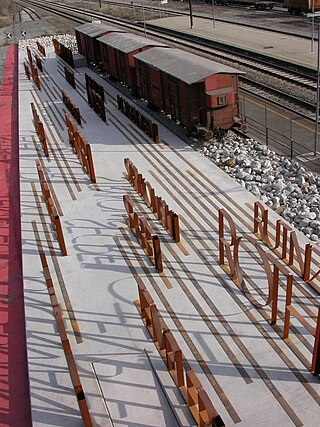
Borgo San Dalmazzo was an internment camp operated by Nazi Germany in Borgo San Dalmazzo, Piedmont, Italy.

Karl Friedrich Titho was a Germany military officer, who as commander of the Fossoli di Carpi and Bolzano Transit Camps oversaw the Cibeno Massacre in 1944. Titho was jailed in the Netherlands after World War II for other war crimes committed there, released in 1953, and then deported to Germany. Despite an arrest warrant in Italy in 1954, Titho was never extradited to stand trial for his actions in Italy, and died in Germany in 2001, confessing and repenting his role in the atrocities just days before his death.
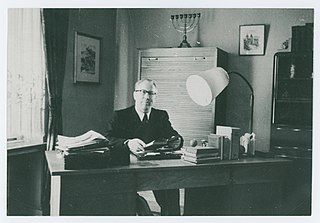
Friedrich Boßhammer (1906–1972) was a German jurist, SS-Sturmbannführer and close associate of Adolf Eichmann, responsible for the deportation of the Italian Jews to extermination camps from January 1944 until the end of the war in Europe. He was arrested in West Germany in 1968 and stood trial. Boßhammer was convicted and sentenced to life imprisonment in April 1972 for his involvement in the deportation of 3,300 Jews from Italy, but died before he could serve time in prison.
The RSI Police Order No. 5 was an order issued on 30 November 1943 in the Italian Social Republic to the Italian police in German-occupied northern Italy to arrest all Jews except those born of mixed marriages, which were required to be monitored by the police.

The Memoriale della Shoah is a Holocaust memorial at the Milano Centrale railway station commemorating the Jewish prisoners deported from there during the Holocaust in Italy. Jewish prisoners from the San Vittore Prison, Milan, were taken from there to a secret underground platform, Platform 21, to be loaded on freight cars and taken on Holocaust trains to extermination camps, either directly or via other transit camps. Twenty trains and up to 1,200 Jewish prisoners left Milan in this fashion to be murdered, predominantly at Auschwitz.
Karl Brunner was a German lawyer, SS-Brigadeführer and Generalmajor of the police and the SS and police leader in Salzburg and Bolzano. Brunner served as head of the Einsatzkommando 4/I during the invasion of Poland and the early stages of the German occupation in 1939, tasked with the killing of Polish civilians. During his time in Northern Italy he was also responsible for the arrest, and ultimately, the deportation of the Jews in his area of jurisdiction, as well as reprisals against Italian civilians.
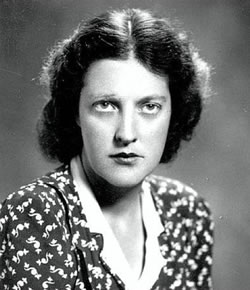
Ada Buffulini was an Italian medical doctor and anti-Fascist campaigner, who led the resistance movement at Bolzano Transit Camp during the Second World War.

Leopoldo Gasparotto, better known as Poldo Gasparotto was an Italian mountaineer and Resistance leader during World War II.















